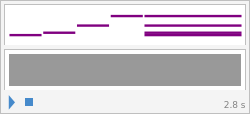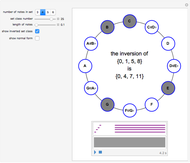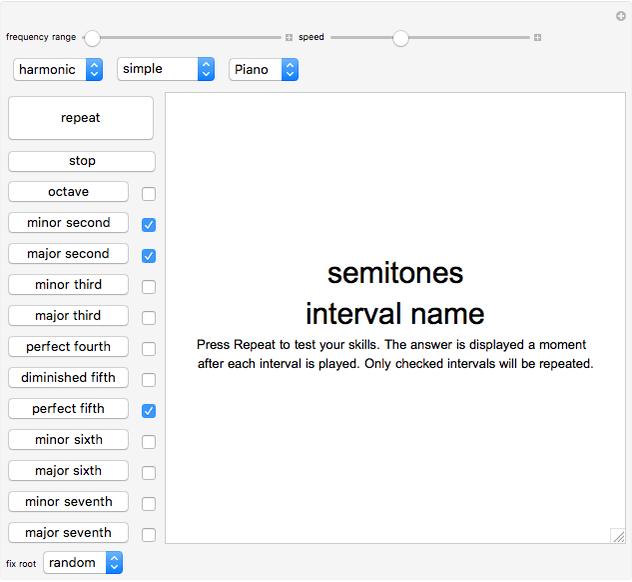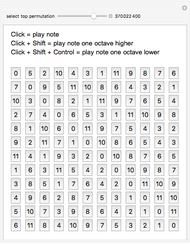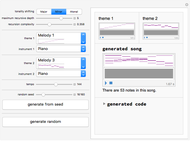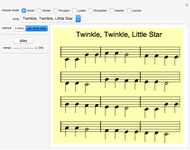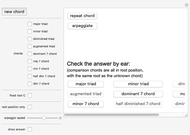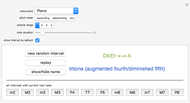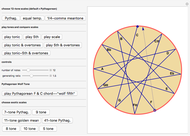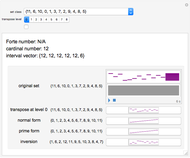Pitch-Class Set Orders and Forms

Requires a Wolfram Notebook System
Interact on desktop, mobile and cloud with the free Wolfram Player or other Wolfram Language products.
Pitch-class set theory emerged during the 20th century as a manner of analyzing the atonal compositions of various composers. A pitch-class set is a subset of the pitches of the chromatic scale, represented by integers 0 through 11. Important information about each set, including the Forte number (an identifier), cardinal number (number of elements in a set), interval vector (interval content of a set), and matrix are shown, as well as several important orderings and transformations of the set: the transpose, normal form, prime form, and inversion. The definitions of these orderings and transformations are given in the Details section. Many of the set classes in this Demonstration are labeled by citing a musical composition in which they occur.
Contributed by: Didi Park (January 2014)
Open content licensed under CC BY-NC-SA
Snapshots
Details
The Forte number is used to identify a set based on its prime form, and consists of the set's cardinal number, the number of elements in the set, and a number denoting its order in the listing created by A. Forte. The interval vector represents the interval content of a set: it represents the number of times the six interval classes (denoted by "ic") occur in a set, where an interval class is given by the difference between any two elements in the pitch-class set. The first number in an ic corresponds to the number of times ic1 occurs, the second number ic2, and so forth.
The transposition at level  of a set is produced when an integer
of a set is produced when an integer  is added to each element of the set. Normal form and prime form give the most "compact" form of a set.
is added to each element of the set. Normal form and prime form give the most "compact" form of a set.
A set is in normal form if it is in order and the differences between the first element and each of the proceeding elements is minimized.
Prime form is the transposition of the normal form such that the first element of the set is 0.
The inversion of set  is given by
is given by  for each element
for each element  of
of  . Thus
. Thus ,
,  ,
,  , and so on.
, and so on.
The matrix of a set is generated as follows: the set is represented in the first row and column, and the values of each row and column cell are added and adjusted modulo 12. It illustrates combinatorality, which is satisfied when  has the same elements as the original set.
has the same elements as the original set.  is the transpose at level
is the transpose at level  of the inverse of the original set. The integer
of the inverse of the original set. The integer  is the number that appears in the matrix with a frequency equal to the cardinality of the original set.
is the number that appears in the matrix with a frequency equal to the cardinality of the original set.
Snapshot 1: any set of cardinality 12 has an "uninteresting" interval vector with 12 of each interval class except ic6, and a prime ordering which forms the chromatic scale
Snapshot 2: set 8-1 is combinatorial, as shown by the matrix
Snapshot 3: set 4-19 is not combinatorial; there is no element in the matrix that appears the same number of times as the cardinality of the set
References
[1] A. Forte, The Structure of Atonal Music, New Haven: Yale University Press, 1973.
[2] J. Tomlin. "All About Set Theory." (Jan 10, 2014) www.jaytomlin.com/music/settheory/help.html.
Permanent Citation
